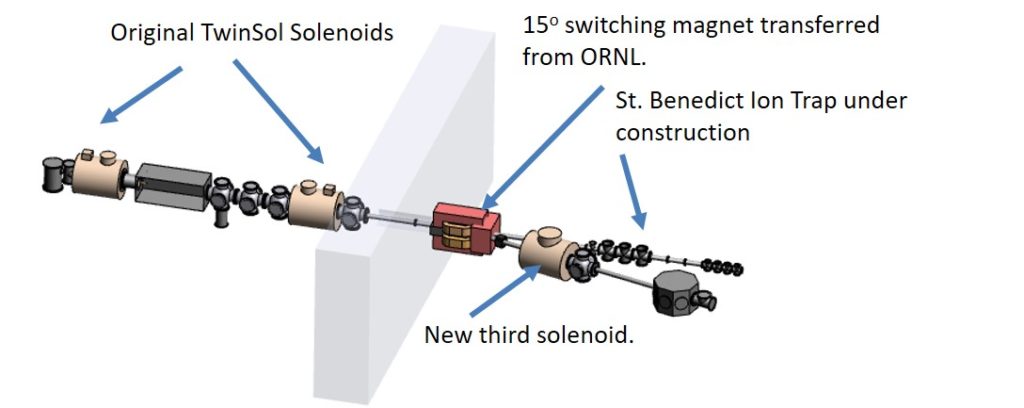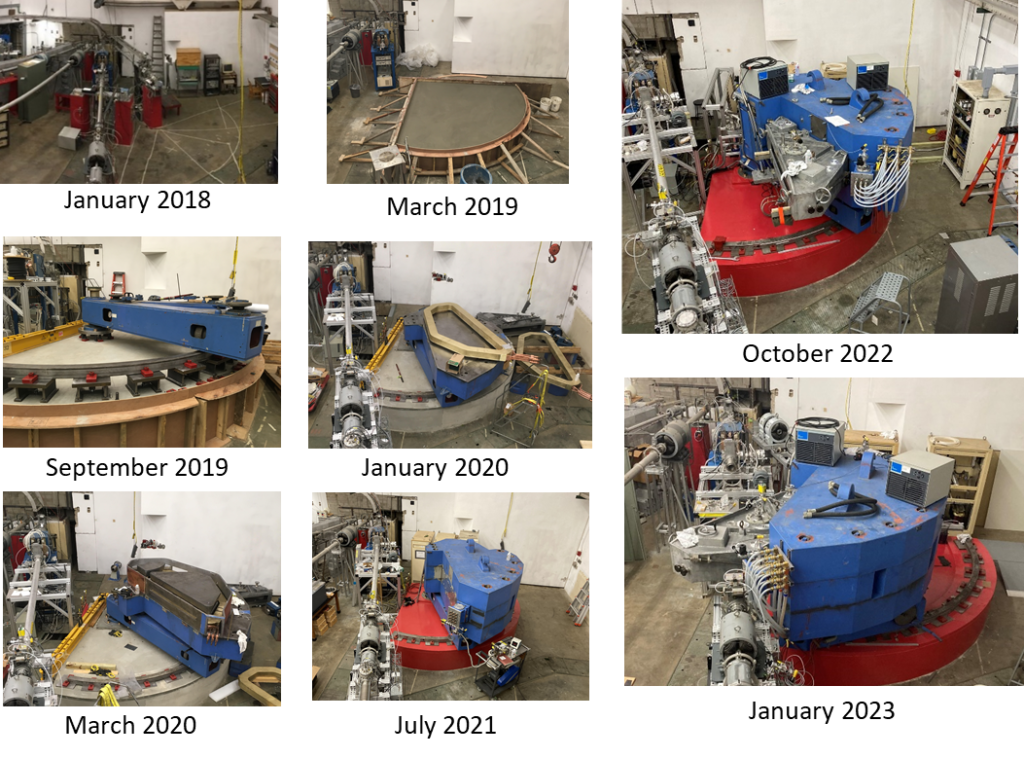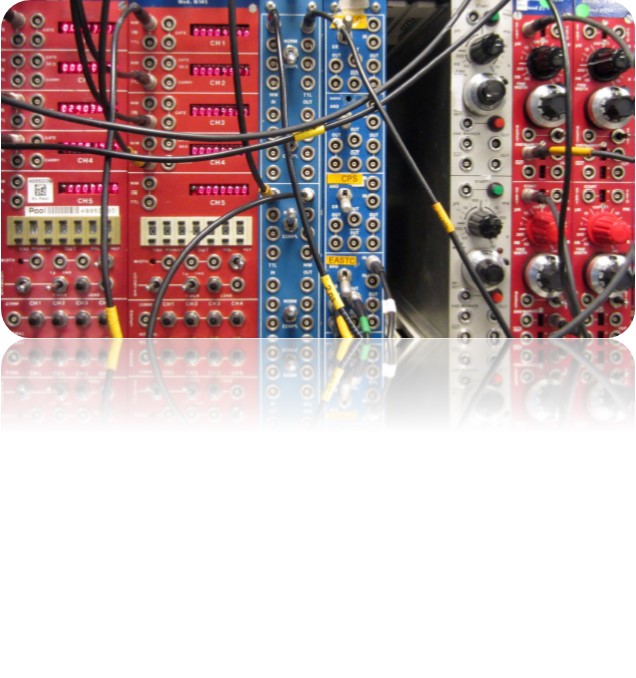The majority of the chemical elements that make up our world were created by nuclear reactions in stars at various stages of their lifetimes. How these stars ignited, evolved, and ultimately died in events that peppered the Cosmos with their ashes is one of the primary quests of modern science. The answers lie, in large part, in the nuclear physics that determine the properties and reactions of the nuclei involved. In many of the important astrophysical scenarios such as novae, X-ray bursts, and supernovae, the nuclei involved are exotic, and therefore understanding the structure and reactions on exotic nuclei is of key importance. At the Notre Dame NSL, techniques have been developed to produce and study the very same exotic nuclei that dominate astrophysical explosions.
The method to create unstable nuclei was developed at the Notre Dame NSL more than 25 years ago and utilizes the magnetic separator TwinSol, which is so named because of the twin solenoids that form the core of the device. In fact, TwinSol was the first facility in the United States dedicated to the production of beams (fast moving streams of atoms) of exotic nuclei. To produce unstable beams, a primary beam from the NSL FN tandem accelerator is used to bombard gas cells in which the radioactive nuclei are produced. TwinSol is then used to separate, purify, and refocus the exotic beams for use in further experiments of astrophysical interest. TwinSol experiments have resulted in hundreds of publications, and based upon that success, the University of Notre Dame has upgraded TwinSol to TriSol with the addition of a switching magnet and a third solenoid.

In addition to exotic beams, specialized targets and detectors are required to make measurements of astrophysical interest. A recent addition to our program is the Active Target High-Efficiency detector for Nuclear Astrophysics (ATHENA). ATHENA is a combination of an active target with the principles of an ionization detector that can efficiently study reactions (especially He induced) that are important in many astrophysical scenarios. Radioactive beams are slowed and stopped in the detector volume allowing for the efficient study of reactions over a broad range of energies. Beam ions are identified on an event-by-event basis so measurements with cocktail beams are easily accomplished. Finally, total cross sections are measured independent of angular distributions or excited-state populations.

a,n) reaction occurs, a sudden increase in ionization indicates the presence of a reaction event.Other measurements are performed using large arrays of silicon strip detectors. The energies and angular distributions of reaction products can be measured, which informs nuclear cross section data for astrophysical reaction rate estimation.

A new addition to the suite of instruments our group uses in the Enge Split-Pole Spectrometer. The spectrometer is used to study transfer reactions on stable targets that produce the same exotic nuclei important for astrophysical explosions. Light ions from the transfer reactions are imprinted with critical nuclear structure information that can be used to determine the reaction rates of interest. The spectrometer separates and precisely measures the momenta of these light ions while also being able to rotate the measure the angular distributions. The spectrometer has been fully operational since 2024.

In addition to work performed locally, experiments are often performed using the JENSA gas-jet target and SECAR recoil separator at FRIB. Our group has also led multiple experiments using the GODDESS detector at ATLAS. Additional experiments have been studied at ISAC at TRIUMF and at CRIB in Tokyo.
